I am using the code below to use matplotlib to plot a diagram for a huge number of data.
def plot_en(filename):
data_1 = np.loadtxt(f"{filename[0]}.en")
data_2 = np.loadtxt(f"{filename[1]}.en")
fig, (ax1, ax2) = plt.subplots(1, 2)
plt.subplots_adjust(top = 1, bottom = 0.08, left = 1.5, right = 3.5, hspace = 0.25, wspace = 0.35)
ax1.plot(data_1[:, 0], data_1[:, 1])
ax2.plot(data_2[:, 0], data_2[:, 1])
plot_en(["forward1-on", "forward2-on"])
My diagram looks like this:
However, I need a more accurate diagram something like this:
Is there any way that I can make lines in my plot more distinguishable? or what change should i do on my code


